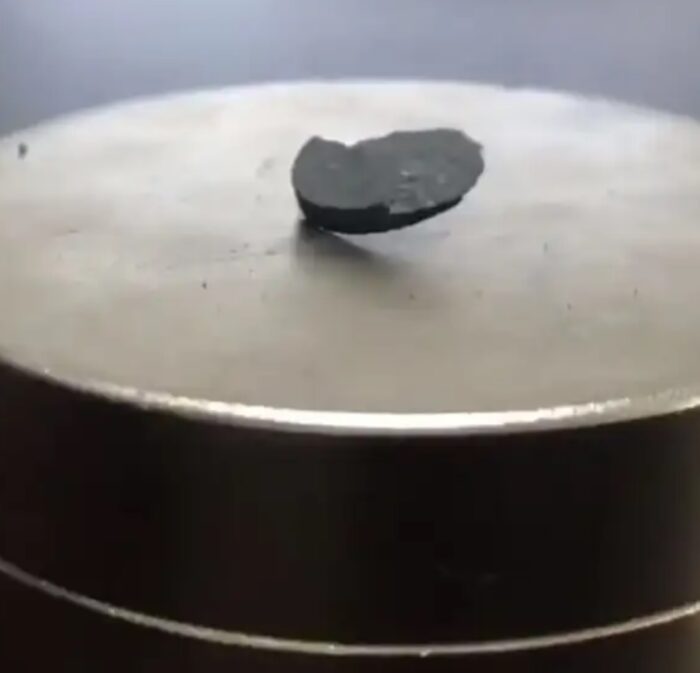Jul 31 2023
The Superconductor Flap of 2023
 If you are at all interested in science and technology news, you have probably heard that a team from South Korea claims to have developed a material that is a superconductor at room temperature and ambient pressure. Interestingly, if you are someone who does not follow such news, you probably haven’t read this. As is often the case, I am as interested in how certain science news gets received and reported as the news itself, and this is an interesting case.
If you are at all interested in science and technology news, you have probably heard that a team from South Korea claims to have developed a material that is a superconductor at room temperature and ambient pressure. Interestingly, if you are someone who does not follow such news, you probably haven’t read this. As is often the case, I am as interested in how certain science news gets received and reported as the news itself, and this is an interesting case.
First, the claim being made here is beyond massive. If true (and that’s still a big if) this is the biggest science news so far this century. I would rank it above even CRISPR. This is a technological “holy grail” if ever there were one. A superconductor is a material that conducts electricity without resistance, so there is no energy loss or waste heat produced. It doesn’t take much of an imagination to figure out how useful this would be. We dedicated an entire chapter to this idea in our recent book on future technology. We have a massively and increasingly electrified civilization, and a practical superconducting material would benefit almost every aspect of it. It also makes some extreme technologies more plausible, such as fusion power. We (the world) are about to (hopefully) invest billions if not trillions into upgrading our electrical power grids, and this is the material we would use if these claims are true.
We already have superconductors. You might remember back in the 1980s when scientists discovered the first “high temperature” superconducting class of material. This was only relatively high temperature – raising the highest critical temperature (the temperature below which a substance is superconducting) above 77 K, the boiling point of liquid nitrogen. While still extremely cold, cooling with liquid nitrogen is much cheaper and more practical than liquid hydrogen or helium. Since then other classes of material have been found with critical temperatures as 250 K, but these require extremely high pressures. They basically are not practical for anything, and are only useful for superconductivity research.
Here is the new paper – it’s a preprint, which means it has not been peer-reviewed. I think that’s one of the reasons the news isn’t headlined everywhere. The researchers claim to have produced essentially an alloy of lead, apatite, and copper that is a superconductor at room temperature, actually up to 127°C (261°F), at ambient pressure. Further, this is not some brittle ceramic, it’s a ductile metal. They report:
The superconductivity of LK-99 originates from minute structural distortion by a slight volume shrinkage (0.48 %), not by external factors such as temperature and pressure. The shrinkage is caused by Cu2+ substitution of Pb2+(2) ions in the insulating network of Pb(2)-phosphate and it generates the stress.
Essentially when you substitute a small amount of copper atoms for the lead atoms the molecular structure shrinks a bit causing the creation of quantum wells, which allow for the superconductivity. But is this potentially world-changing material science breakthrough real? My take at this time is – probably not, but it’s not impossible. Unlike, say, cold fusion, superconductivity is a known phenomenon. (Cold fusion technically exists, just not in any significant amount that can ever be harvested.) Superconductivity is not pseudoscience, it’s not magic, it’s not perpetual motion or something else that defies the currently known laws of physics. It is therefore entirely plausible. The only real question is – have they done it?
The scientific community is appropriately skeptical. First, the two papers describing the research have not been peer-reviewed. But more importantly, the work has yet to be replicated. Until it is replicated, odds are the researchers just made some mistake. This would then be an episode like the superluminal neutrinos – everyone (including the researchers themselves) thought they likely made an error somewhere, and they did (a mechanical fault in their setup). Further, there has been several fraudulent claims of superconducting breakthrough coming out of South Korea in the last few years.
Which, as an aside, I don’t get. For something so immediately practical, you have to know that any fraud will blow up in your face sooner than later. If you don’t actually have a working superconductor, you can’t fake it. Unless you are deliberately working the fringes for scam funding, then plan on disappearing, but that doesn’t seem to be the case.
At any rate, whether or not these researchers are sincere, it will all come down to if LK-99 can be replicated. They gave instructions for how to make the stuff, and it should take a properly equipped lab only a few days to do it. Within weeks I expect to start hearing announcements from other labs that they could or could not replicate the effects of LK-99.
Finally, I have to say I am a little surprised this is not getting more play in the mainstream media. The bad explanation for this would be that the benefits of a superconducting material are too archaic for the average reader (in their estimation). The good reason would be that they detect the skepticism of the scientific community and are waiting to see how this plays out, so they don’t get caught with their pants down, similar to the cold fusion episode.
Either way – there will be follow up, and relatively soon. Either this is just another false claim that quickly collapses, or get ready for an exciting breakthrough. It should be interesting.






